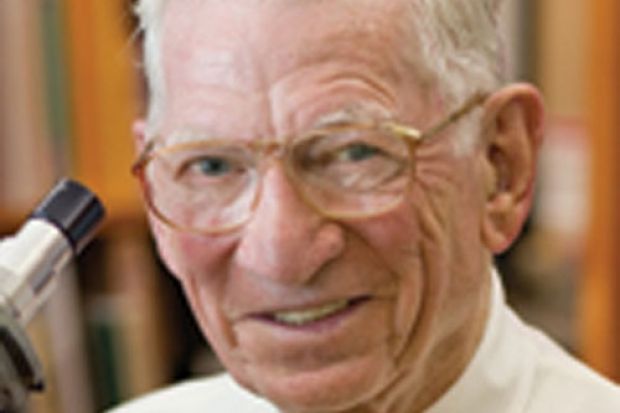Arthur Aufderheide was born on 9 September 1922 and brought up in New Ulm, Minnesota. He was educated at St Olaf College, the University of Minnesota Medical School in Minneapolis and then, as a pathology resident, the University of Minnesota.
After an internship at Rochester General Hospital in New York State and service with the US Army Medical Corps (1947-49), Professor Aufderheide returned to his home state for the rest of his career. While a student during the Second World War, he had already met his future wife Mary Buryk, when she sought his help with a patient in the unromantic setting of a psychological ward. A talented linguist, she would later provide crucial support during his expeditions around the world to acquire mummies and other materials for his studies.
After working as head of pathology at the Minneapolis Veterans Medical Center and at hospitals in Duluth, Minnesota, Professor Aufderheide took on an academic role at the University of Minnesota Medical School in Duluth. Head of the pathology department and acting dean from 1973 to 1974, he was to remain a professor there for more than 30 years, from 1978 until retirement, at the age of 86, in 2008.
Always a keen outdoorsman, Professor Aufderheide greatly enjoyed hiking, cross-country skiing and snowshoeing in his local region. He also managed to combine his medical expertise with a love of travel and a desire to explore distant cultures as he helped to pioneer the new discipline of palaeopathology. He spent three winters in the Arctic among the Inuit, took part in a 1968 expedition to the North Pole and compiled a major Arctic film archive with the celebrated documentary photographer Jim Brandenburg.
Even more unusually, Professor Aufderheide roamed far and wide to assemble the world’s largest collection of tissue samples (more than 5,000) from mummies, some as much as 9,000 years old. Although inspired partly by a sheer spirit of adventure, he was passionate in his conviction that the analysis of mummies could reveal fascinating information about the spread of diseases in the past, which might also provide important insights to modern epidemiologists. His findings are summarised in The Cambridge Encyclopedia of Human Paleopathology (with Conrado Rodriguez-Martin, 1998) and The Scientific Study of Mummies (2003).
Professor Aufderheide died on 9 August and is survived by his wife, a daughter, two sons and three grandsons.
Register to continue
Why register?
- Registration is free and only takes a moment
- Once registered, you can read 3 articles a month
- Sign up for our newsletter
Subscribe
Or subscribe for unlimited access to:
- Unlimited access to news, views, insights & reviews
- Digital editions
- Digital access to THE’s university and college rankings analysis
Already registered or a current subscriber? Login
